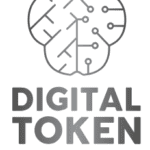Reinforcement learning is the technology that enables machines to learn from their own actions and rewards, and to optimize their behavior for achieving their goals. It is one of the branches of artificial intelligence, along with supervised learning and unsupervised learning, that deals with learning from experience and feedback.
In reinforcement learning, a machine or an agent learns to interact with an environment, which can be real or simulated, and to perform actions that maximize a reward or a value function, which can be predefined or learned. The agent does not have prior knowledge or supervision about the environment or the optimal actions, but it learns from its own experience and feedback.
There are many steps and techniques involved in reinforcement learning, depending on the specific problem and application. However, a general framework of reinforcement learning can be summarized as follows:
- Agent: This is the machine or the entity that learns from its own actions and rewards, and that interacts with the environment. The agent can be a robot, a software, a game character, etc.
- Environment: This is the system or the context that the agent interacts with, and that provides the agent with observations, actions, and rewards. The environment can be real or simulated, deterministic or stochastic, discrete or continuous, etc.
- Observation: This is the information or the state that the agent receives from the environment at each time step. The observation can be complete or partial, noisy or clear, etc.
- Action: This is the decision or the move that the agent makes in the environment at each time step. The action can be discrete or continuous, deterministic or probabilistic, etc.
- Reward: This is the feedback or the outcome that the agent receives from the environment as a result of its action at each time step. The reward can be positive or negative, immediate or delayed, scalar or vector, etc.
- Policy: This is the strategy or the rule that the agent follows to select its actions based on its observations. The policy can be deterministic or stochastic, explicit or implicit, etc.
- Value function: This is the function or the measure that the agent uses to evaluate the expected or the discounted future reward of its actions or observations. The value function can be state-value or action-value, etc.
- Model: This is the representation or the approximation that the agent uses to predict the next observation or reward given its current observation and action.
There are various algorithms and methods that can be used to implement and optimize reinforcement learning, such as:
Reinforcement learning has many applications and benefits in various domains and industries, such as:
- Gaming: Reinforcement learning enhances game agents’ intelligence, enabling them to learn and adapt in games like chess, Go, and Atari.
- Robotics: Reinforcement learning boosts robots’ autonomy, teaching them skills like walking, grasping, and navigating.
- Control: Reinforcement learning optimizes dynamic systems, regulating variables such as temperature and speed.
- Education: Reinforcement learning personalizes learning, offering tailored feedback and adapting to learners’ preferences.
- Finance: Reinforcement learning predicts market trends and risks, aiding in trading, investment, and decision-making.
- These examples illustrate the vast potential of reinforcement learning to positively impact society.



4 comments
[…] OpenAI’s AI technology has garnered significant attention, the company has not been without its share of corporate […]
[…] also believes that humans can benefit from the access to the vast amount of information and computation that AI can provide, and that humans can enrich their lives by sharing their thoughts and experiences with […]
[…] But what exactly is machine learning, and how does it work? How do machines learn from data, and what are the types of algorithms that they use? And what are some of the examples of machine learning applications that we encounter in our daily lives? In this article, we will answer these questions and give you an overview of the technology, algorithms, and applications of machine learning. […]
[…] learning is the technology that enables machines to learn from large and complex data. To perform tasks that require human-like intelligence, such as vision, […]